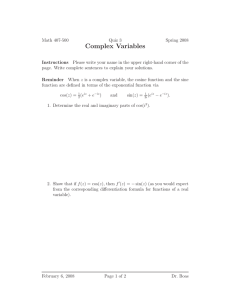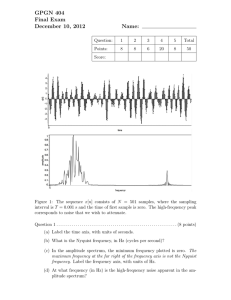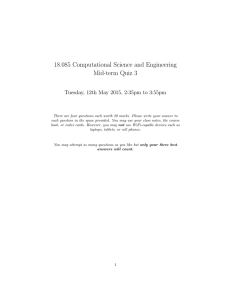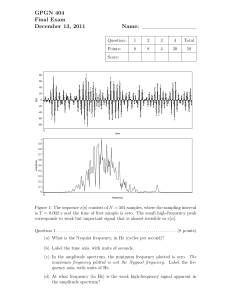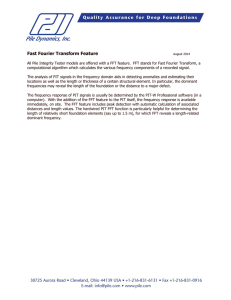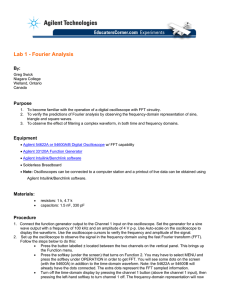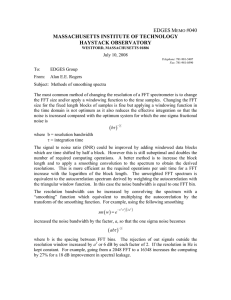The art of signal processing Alex Townsend April 28, 2015
advertisement
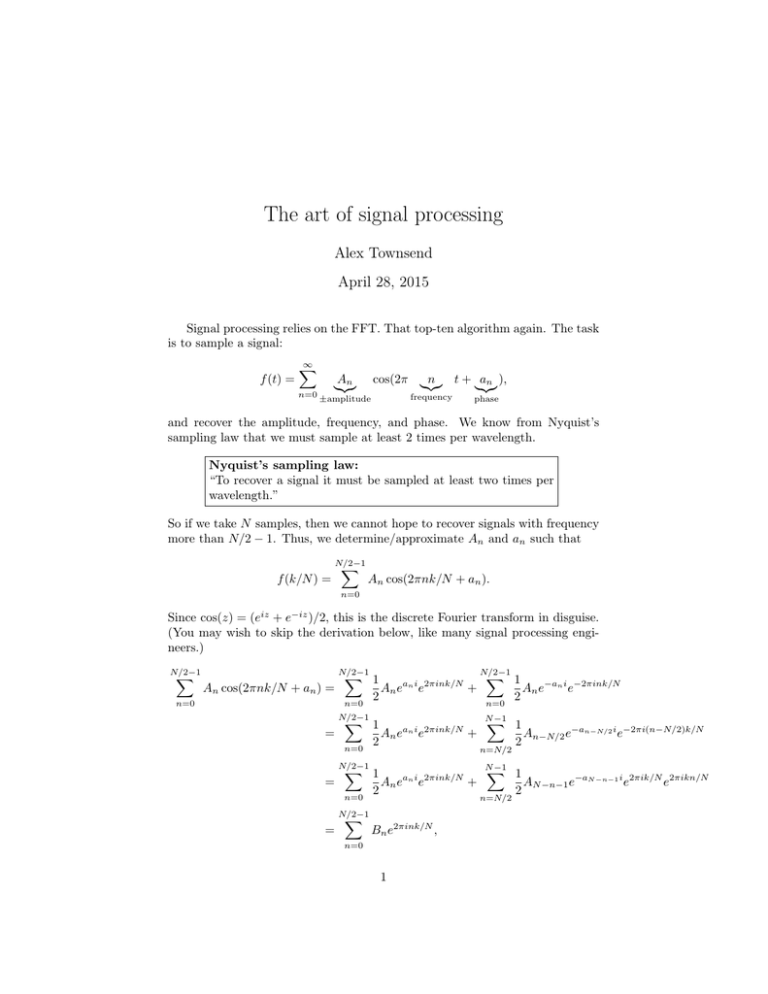
The art of signal processing
Alex Townsend
April 28, 2015
Signal processing relies on the FFT. That top-ten algorithm again. The task
is to sample a signal:
f (t) =
∞
X
n=0
An
|{z}
±amplitude
cos(2π |{z}
n
t + an ),
|{z}
frequency
phase
and recover the amplitude, frequency, and phase. We know from Nyquist’s
sampling law that we must sample at least 2 times per wavelength.
Nyquist’s sampling law:
“To recover a signal it must be sampled at least two times per
wavelength.”
So if we take N samples, then we cannot hope to recover signals with frequency
more than N/2 − 1. Thus, we determine/approximate An and an such that
N/2−1
f (k/N ) =
X
An cos(2πnk/N + an ).
n=0
Since cos(z) = (eiz + e−iz )/2, this is the discrete Fourier transform in disguise.
(You may wish to skip the derivation below, like many signal processing engineers.)
N/2−1
X
N/2−1
An cos(2πnk/N + an ) =
n=0
N/2−1
X 1
X 1
An ean i e2πink/N +
An e−an i e−2πink/N
2
2
n=0
n=0
N/2−1
=
N
−1
X 1
X
1
An ean i e2πink/N +
An−N/2 e−an−N/2 i e−2πi(n−N/2)k/N
2
2
n=0
n=N/2
N/2−1
=
N
−1
X 1
X
1
An ean i e2πink/N +
AN −n−1 e−aN −n−1 i e2πik/N e2πikn/N
2
2
n=0
n=N/2
N/2−1
=
X
Bn e2πink/N ,
n=0
1
where
(
Bn =
1
an i
,
2 An e
1
an i 2πik/N
e
,
2 An e
0 ≤ n ≤ N/2 − 1,
N/2 ≤ n ≤ N − 1.
(1)
Our task is to compute Bn from samples f (k/N ) and then to work out An and
an . You will notice that
N/2−1
f (k/N ) =
X
Bn e2πink/N ,
0≤k ≤N −1
n=0
is not quite the DFT. There is a minus sign missing, and we want the inverse
process: Bn from f (k/N ) not f (k/N ) from Bn . These two cancel each other
out. It really is the FFT. I told you the FFT is like superman.
So we take samples of our signal, f (k/N ), compute the FFT of them to get
Bn , and then undo (1). We have
amplitude = |An | = |2Bn e−an i | = 2|Bn |.
The frequencies are the non-zero values of Bn . Lastly, we have
Im(Bn )
−1
.
phase = an = tan
Re(Bn )
Do not apply the formula for an , unless Bn is nonzero.
Warning: In MATLAB there is a scaling to take care of. Divide
Bn by N after the FFT.
What happens if the signal is composed of non-integer frequencies? For
example,
N/2−1
X
f (k/N ) =
An cos(2πωn k/N + an ).
n=0
Then, you will need extra ideas such as zero padding and windowing. (See class
notes for brief introduction.)
2

